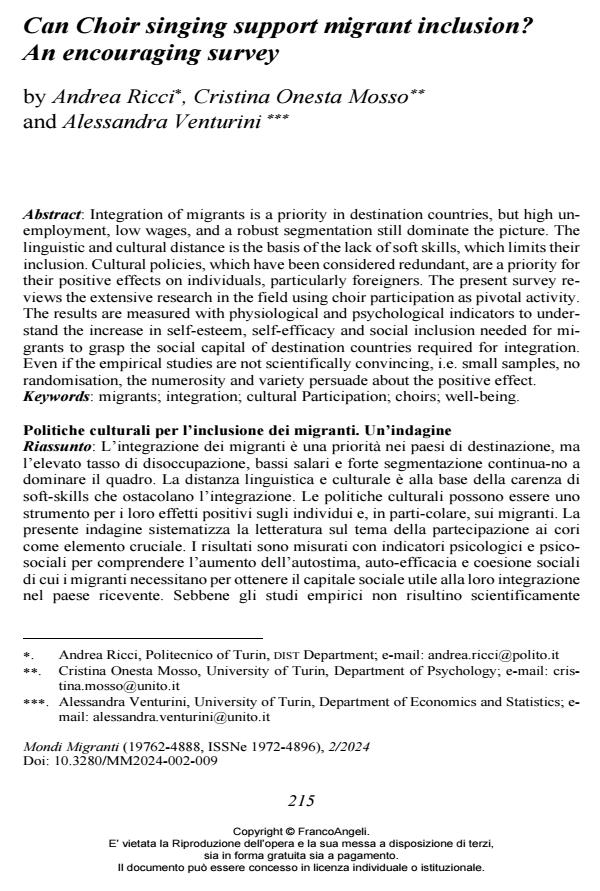Can Choir singing support migrant inclusion? An encouraging survey
Journal title MONDI MIGRANTI
Author/s Andrea Ricci, Cristina Onesta Mosso, Alessandra Venturini
Publishing Year 2024 Issue 2024/2
Language English Pages 23 P. 215-237 File size 250 KB
DOI 10.3280/MM2024-002009
DOI is like a bar code for intellectual property: to have more infomation
click here
Below, you can see the article first page
If you want to buy this article in PDF format, you can do it, following the instructions to buy download credits

FrancoAngeli is member of Publishers International Linking Association, Inc (PILA), a not-for-profit association which run the CrossRef service enabling links to and from online scholarly content.
During the Covid-19 pandemic, Italy imposed lockdown measures, which also affected places of worship that had to suspend group religious celebrations. This study focuses on the dematerialization of the sacred space, achieved through the creation of the “digital mosque.” The author interviewed imams and participated in online worship during the lockdown. The analysis of the data explored various facets, including the reactions of Muslim communities to the impact of the lockdown and government directives guidelines. The study then delved into the transition of certain communities from offline Islam to online Islam, culminating in the establishment of the “digital mosque.” The lat-ter serves as both a virtual gathering place for the faithful and a tool for social control and the definition of authority in the interpretation of the online inter-pretation of the sacred. However, it should be noted that different Muslim communities reacted in various ways to the use of the internet.
Keywords: Islam; Covid-19; sociology; mosque; digitalization.
Andrea Ricci, Cristina Onesta Mosso, Alessandra Venturini, Can Choir singing support migrant inclusion? An encouraging survey in "MONDI MIGRANTI" 2/2024, pp 215-237, DOI: 10.3280/MM2024-002009